There’s a treasure hunt going on. A hunt for beauty hidden beneath faded or marred surfaces, scuffed corners, broken hinges, and stripped varnish. A hunt for lovely woods like mahogany and maple, oak and cherry. A hunt for quality — evidence of careful craftsmanship exhibited in such details as artistic patterning, dovetail joints, and tongue and groove, where pieces of wood are carefully fitted together like a jigsaw puzzle with no nails.
Furniture buying is a simple, serviceable, get-it-now activity for some folks: they head to a big box store, pick out what they need, and haul it home or put it together. Whatever it is — crib, bookshelf, or table — serves the purpose. It’s not meant to be an heirloom.
But for an increasing number of people, finding furniture that will last — furniture that has inner and outer beauty, pieces they literally love to see, feel and use — has become a real goal. They don’t want to spend several thousand dollars on new furniture. They feel a lack of connection with the bulky styles that dominate contemporary retail furniture stores. And ecologically-savvy consumers are turned off by the chance that newer pieces might be traced back to indiscriminate cutting of trees in rainforests far away. So buying new is just not their thing.
Increasingly, people are turning to alternative sources for furnishing their homes. They scout out used furniture to give it new life — buying it despite its nicks and chinks, despite its missing knob or slightly cracked panel — knowing they can either restore or remake it themselves or hand it off to a furniture restorer who will bring the piece back to life in a way that preserves its original beauty and functionality.
Feel-Good Furniture Investments
One shopping destination has the clear edge these days in Berks County: ReStore, located on the Fifth Street Highway in Reading. It serves the community by accepting donations of furniture that people are getting rid of, providing low-cost chairs, tables, headboards, sofas, armoires, desks, cedar chests — you name it — to others. It’s recycling at its very best. Best of all, it’s guilt-free: ReStore is owned and run by Habitat for Humanity, a nonprofit, nongovernmental organization which builds homes using volunteer labor from the community.
ReStore is a green endeavor. “Every year we reduce thousands of tons of things that would normally be thrown into a landfill,” says Tim Daley, executive director of the Reading Habitat. “By repurposing and giving new life to these items, there’s green in that.”
According to Daley, the Berks store stands out nationally: “ReStores are all over the country — there are a couple of hundred — but not every Habitat has one. The one here ranks at the higher end when you consider population density and square footage. We have 15,000 square feet.”
The store is “always evolving,” he says. “During the economic recession, everyone was looking to cut costs. Nontraditional customers were coming to see what ReStore is. That’s when so many people fell in love with the hunt, the treasure hunt — coming out to see what’s there, loving the idea of what they might find and discover at ReStore. The flip side is that people are living longer and downsizing, and kids don’t necessarily want great grandmom’s dresser — so we end up getting it. That meant we were seeing a different type of inventory. Now there’s a significant amount of quality.”
Drawn to Furniture That’s Interesting, Surprising
“When I look at the things donated to us,” says Daley, “I think back to my parents putting money and meticulous time into pieces of furniture; they were built to last. Every piece tells a story. Each one is a piece of history.
“People come out here, walk through the store, and say things like, ‘I remember that when I was a kid!’ So it’s a unique shopping experience. If you take an item on eBay and compare it to buying at the store, you’ll see something that’s worth $300, but we sell it for $50. We want you to find the surprise. We want you to find the bargain.”
Pictured at right is a classy chest of drawers, one of a three-piece set which includes a matching dressing table with mirror and a tall armoire, or wardrobe. The period pieces, probably from the 1930s, were suffering from obvious wear and disrepair, with scratches, scrape marks, and broken pieces. ReStore set the price at $200. Gems hidden in plain sight, practically shouting out to a buyer with a romantic heart, they stood in the midst of huge 80s-era TV and stereo cabinets. Days later, after no one had made a move to purchase the set, the price dropped to $150, as ReStore prides itself on moving furniture out into the world as soon as possible, making way for more deliveries, pick-ups, and drop-offs.
That’s when the buyer pounced. For $150, the beautiful set stayed together, journeying to a local furniture restorer, Cross Keys Furniture Restoration and Refinishing in Leesport.
Reviving with Respect
The Cross Keys business, begun in 1986, is a family affair, owned by Deborah and Dennis Stanish, with son Chad working alongside his father in the high-ceilinged studio near Leesport. Son Robbie helps as well. They pride themselves on looking out for the client’s interests, even taking the time to drive to ReStore, a storage unit or a home to assess the relative value of a piece of furniture and make recommendations to fit the client’s desires and budget. Their advice reflects deep experience, knowledge of furniture construction, respect for history and craftsmanship, and that special set of skills honed by working for many years on all sorts of projects.
First, Dennis and Chad identify the wood species of each piece, usually within seconds, just by sight. Says Dennis, “I generally know what kind of wood it is. That’s what you have to start with…Chad — you’re good at it, too.” He nods toward his son, hard at work repairing a hutch.
Shrugging modestly, Chad says simply, “I learned on the job.”
“Over time,” says Dennis, “you learn different woods. A piece that’s well made — it’s a ton of work, but it’s worth it.” The hutch was a case in point: “Chad will put boards on that hutch because it’s cracked — so he’ll color a new board and you’ll never be able to tell.”
In the office sits a Hepplewhite-style desk that Chad restored. “It came from Goodwill and we paid $100,” says Dennis. “In the 80s, that would have sold for $2,500 or so.”
Around the studio are drawers and table legs, an open cedar chest, and a chair that will also require reupholstering — in various stages of restoration or refinishing. There is plenty of space to move around; it’s a neat, well-organized, focused workspace. Dennis started the business after going to auctions to pick up pieces to furnish his own house, with a growing family of four children.
“This is a throwaway society,” says Dennis. “But some people do want quality.”
“And character,” Chad says. “It’s all about character.”
Approaching Your New (Old) Purchase
If your treasure hunt yields a piece that you suspect or know is an antique, do take the time to consult with experts, if at all possible, to figure out if it’s a piece that should not be stripped down, fully refinished or painted, but should more appropriately be left “as is.” A truly valuable antique will retain its value by making as few changes as possible, and it deserves all the loving time, energy and cost of preservation using vintage materials and painstaking repairs to inlays, veneers, scrolls and so forth. Or perhaps you simply want to love it just the way it is. It’s all up to you.
Of the many approaches you can take toward furniture, one leap beyond preserving and restoring is repurposing. Ruggedhaus, a studio business owned by Jeremy Arndt of West Reading, specializes in creating simple, rustic expressions by refinishing and chalk painting furniture that he picks up at auction. Sometimes clients come to him with a piece for him to work on.
At first doing this as a hobby, Arndt started showing and selling his work. “My first show was at the Furniture Market in October hosted by Five & Divine in Wernersville. My second show was at the Meraki Holiday Craft Fest held at the Crowne Plaza in Wyomissing in November.” That’s when his customer base started growing, he says. “They liked the styles; they liked the colors.” He prefers earthy colors over abstract, with a particular fondness for “the browns, the grays, the greens,” and confesses that he just loves furniture.
SOURCES
Berks ReStore 5370 Allentown Pike, Temple habitatberks.org/restore Cross Keys Furniture Restoration 1159 Cross Keys Rd., Reading crosskeysfurniturerestoration.com Ruggedhaus: Jeremy Arndt Furniture Artistry See ruggedhaus on Facebook or Instagram. 484.524.2819
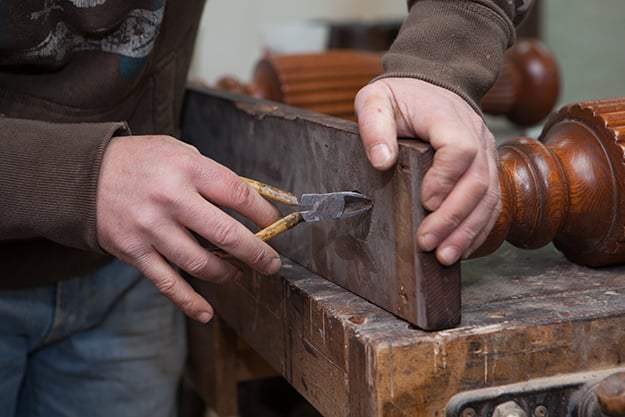
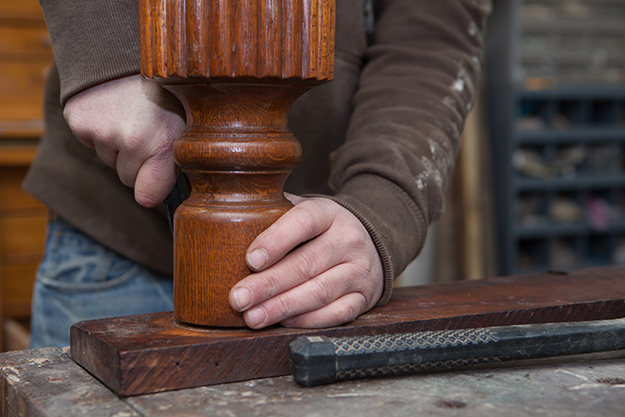

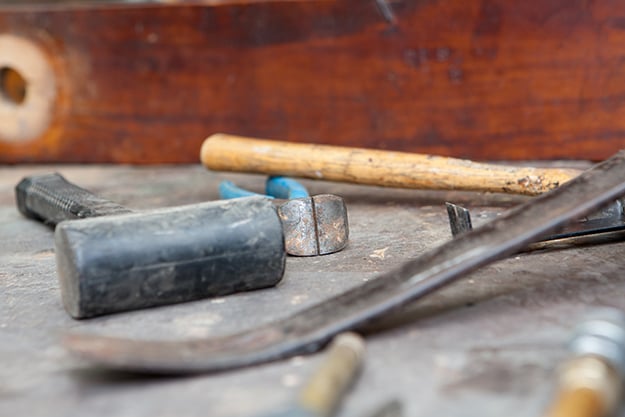
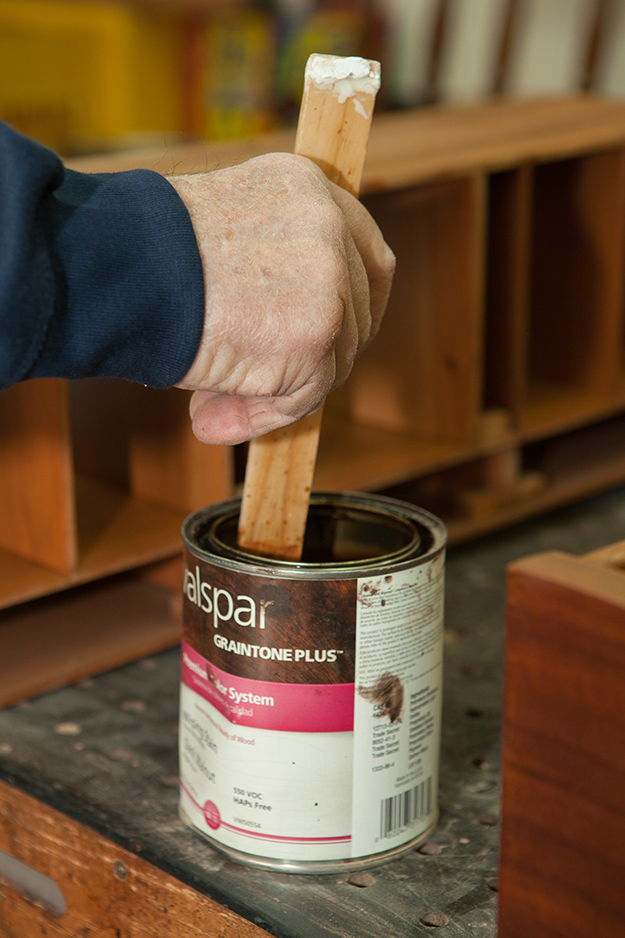
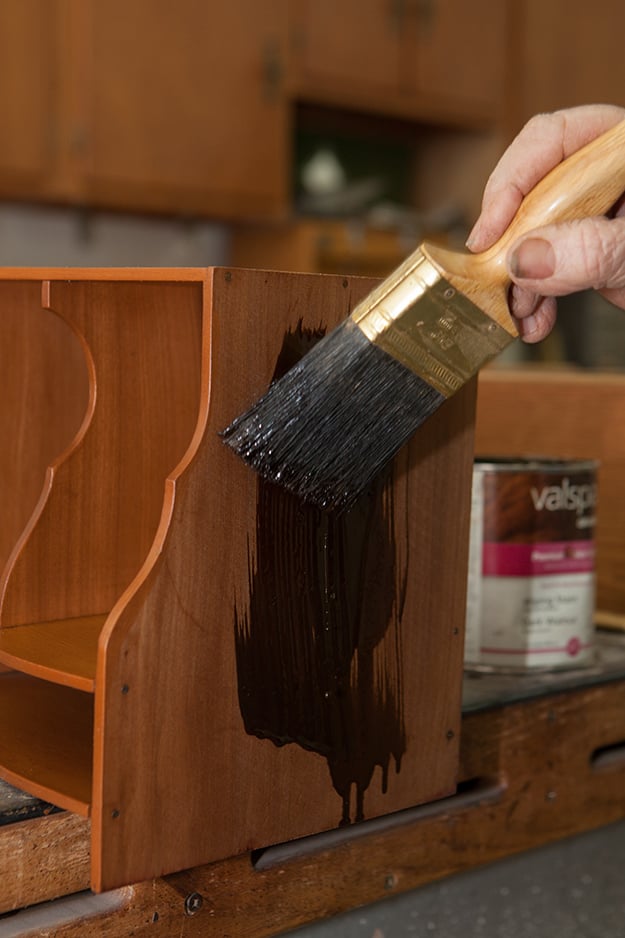
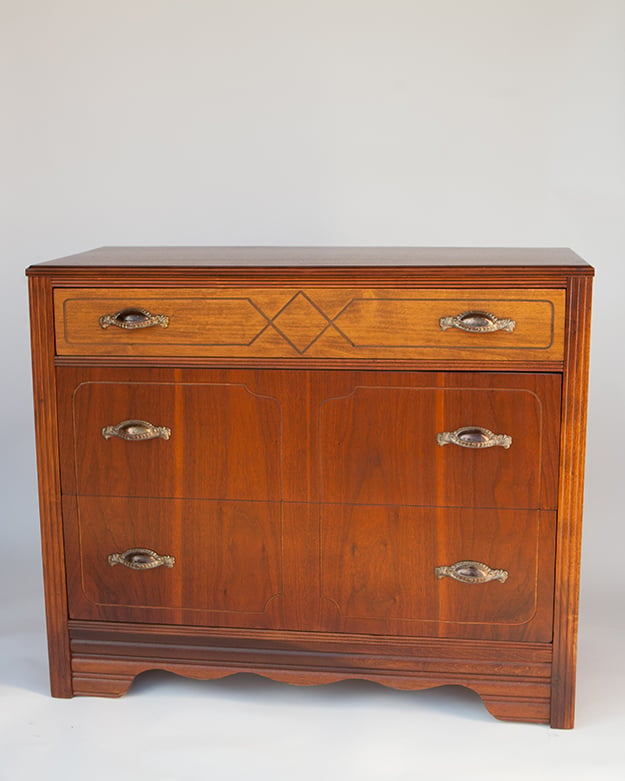
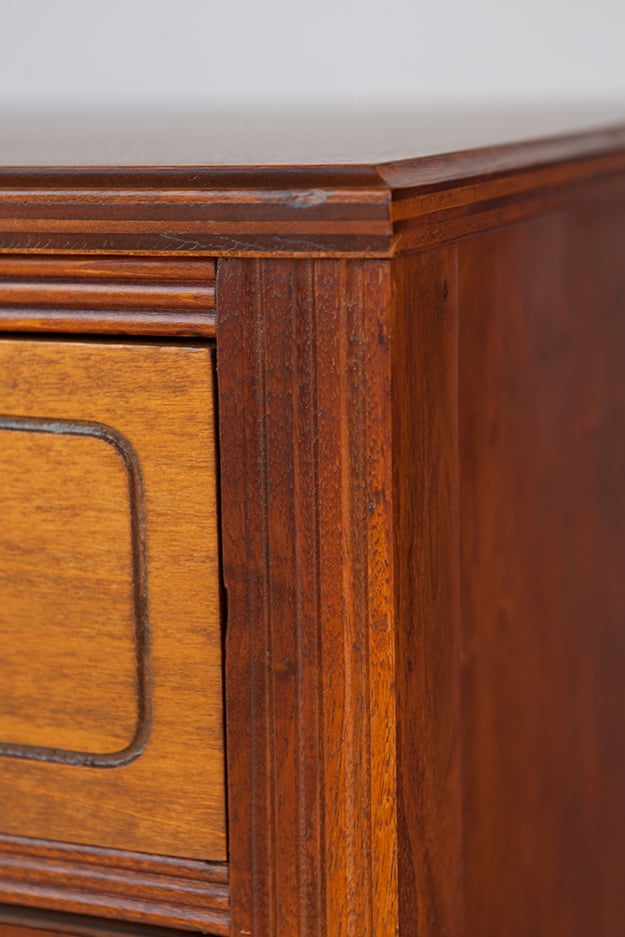
By Marian Frances Wolbers | Photos by Tania Colamarino, Ama Photography
















